|
|
|
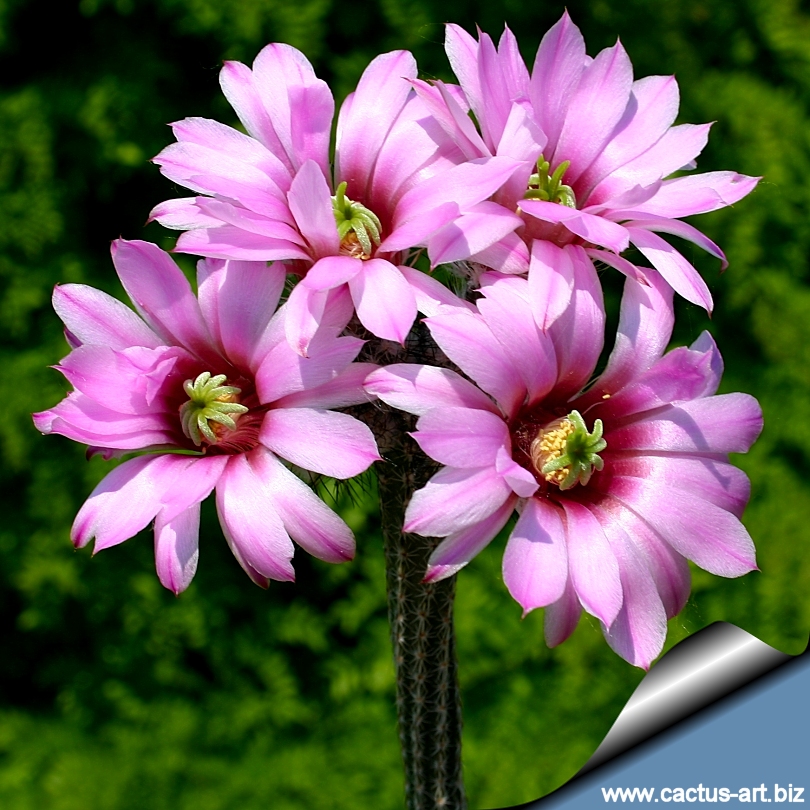
E. poselgeri (SB852 Jim Hogg Co, Texas, USA) has bright pink flowers, and makes a
spectacular sight and an
interesting addition to any collection.
|
|
Morphology (Identifying
Characteristics):
Habit:
Shrubby,
scarcely
branched, initially
erect,
later
sprawling or
clambering.
Stem:
Very tall and slender, dark coloured. up to 1.2 m,
diameter 2 cm, ribs 6-10
Spines:
tan-greyish white; 1
central up to 9 mm long, enlarged at its
base,
4mm long; 8-15 straight
radials, 4,5mm long,
closely
appressed (except at the stem tip)
Roots:
tuberlike,
Contrarily to
E. kroenleinii, the
underground
storage
organ similar to dahlia
tubers
is not capable of producing new
shoots. Those sprout out only from the main
cut stem.
Each plant can have up to 8 tubers, 10-20 mm in diameter, with a
length of 60-100 mm. The colour is light brown in youth, later
brown.
Flower:
Pink Rose/Mauve Magenta (Pink-Purple)
Fruit:
Ovoidal 20 mm Long, 10-15 mm Ø, dark green to brownish,
pulp
white
Seeds: Black 1,5mm
Phenology:
Blossoming
time: Late
Spring/Early
Summer.
Notes: It apparently looks like some
Peniocereus species.
However the
flowers, fruits, and seeds of E. poselgeri are characteristic for
Echinocereus, somewhat comparable to those of
E.
reichenbachii.
|
|
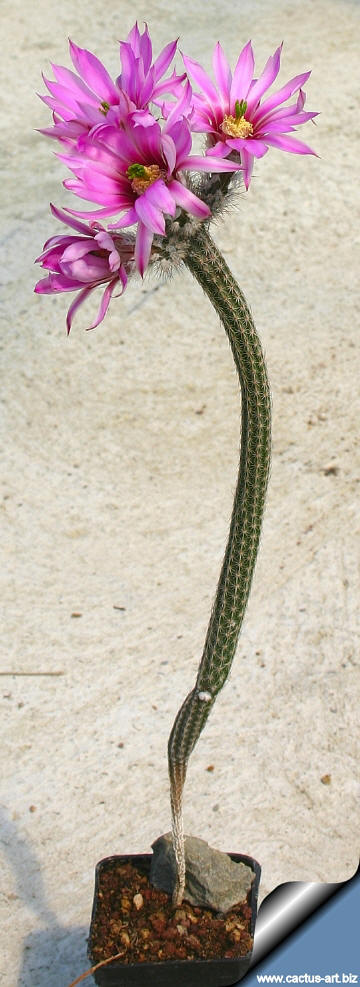
Tall
pencil-thin stem
arising
from a
tuberous root system |
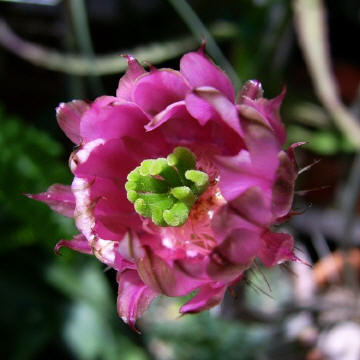
Echinocereus poselgeri GL391
Falcon Lake, Texas, USA
Photo and ©
copyright by
Mladen Turcinovic (Croatia)
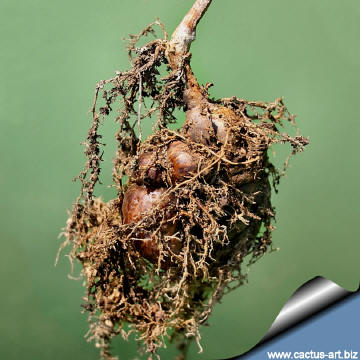
 |
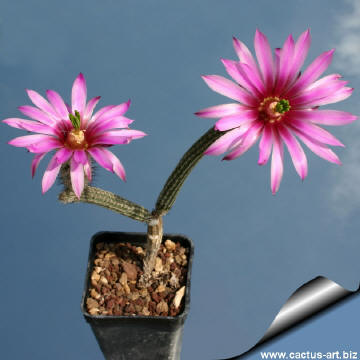 |
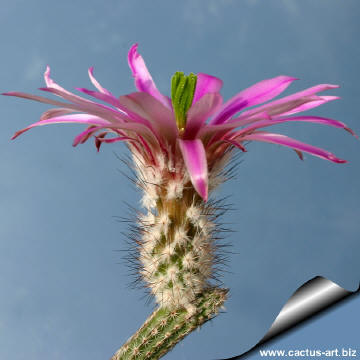 |
|
. |
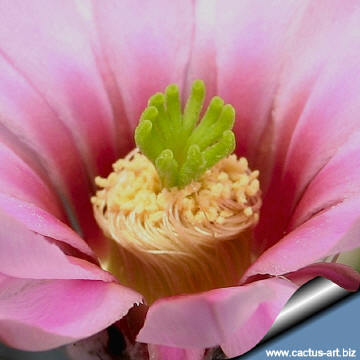 |
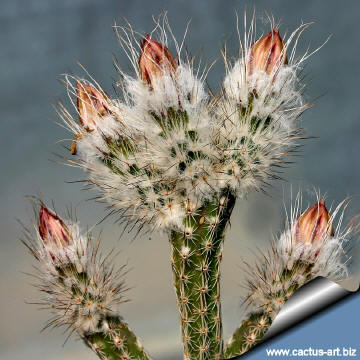 |
|
Advertising
|
|
|
|
|
|
|
Family:
Cactaceae
(Cactus
Family)
Scientific Name:
Echinocereus
poselgeri
Lemaire
Published in: Cactées. 57.
1868 Table 2 fig. 2
Conservation status: Listed in
CITES Appendix II
Section:
Wilcoxia
Distribution:
West & South West USA (Texas) and Mexico (Coahuila, Nuevo Leon,
Tamaulipas)
Habitat: Among
thorn
scrub in alluvial soils; 0-200 m;
Locus typicus:
USA: Texas, near the Rio
Grande, H. POSELGER
Type:
Lectotypus (L. BENS0N 14 , 1982): USA: Texas, Rio Grande'aboy*Belleville,
H. POSELGER coll. 1850 [MO]
Synonyms:
- Cereus tuberosas Poselger.
Allg.Gartenz. 21: 135, 1853 nom. illegit.
- Echinocereus tuberosus (H. Poselger)
T. Ruempler
in FÖRSTER 's Handb. Cacteenk‑,ed. 2: 783, 1886
- Wilcoxia tuberosa (H. Poselger) K.
Kreuzinger
Verzeichnis: 18, 1935
- Cereus poselgeri (Ch. Lemaire) J. M. Coulter.
Contr.U.S. NAT.Herb. 3: 398, 1896
- Wilcoxia poselgeri (Ch. Lemaire) N. L. Britton
& J. N. Rose.
Contr.U.S. Nat. Herb. 12: 434, 1896
Vernacular
name (s):
Sacasil, Zocoxochitl Pencil cactus, Dahlia
hedgehog cactus.
|
|
|
|
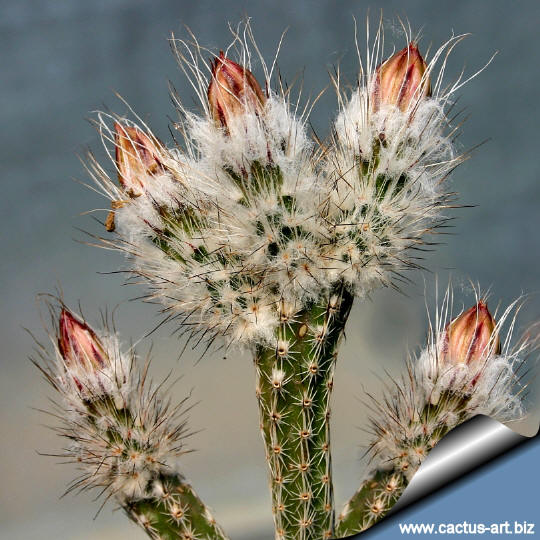
Buds just before opening
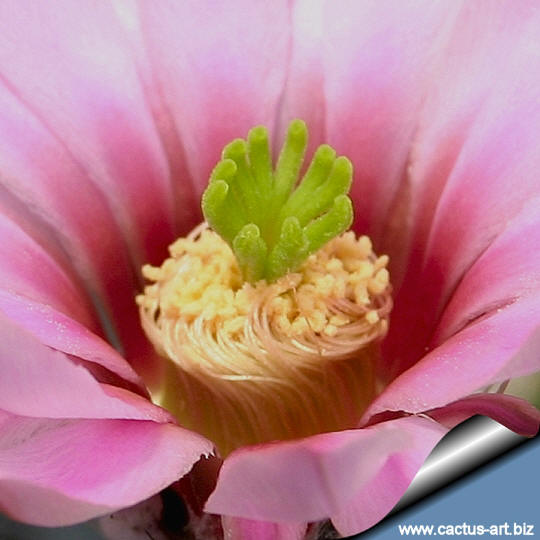
Green
stigma and yellow
anthers
|
|
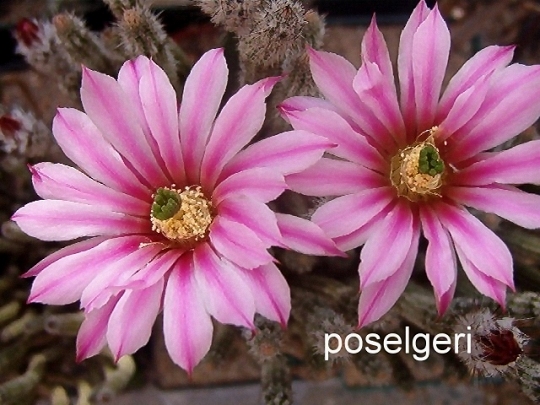
Some photos and information in this page courteously provided
by Dieter & Irene Waldeis
Cultivation:
Do not
over water. They
need to be kept in a cool, dry place during
winter rest (at -5 +10°C).
This is important for the
flowers as well as for their health. Without this cool winter
period they normally won't get any
buds.
It is quite frost hardy -7 (-10)° C.
Sun Exposure:
Best in
full or
partial sun exposure.
In mild climate they grow well when planted freely outside
in well-drained soil.
Propagation: Seeds
(usually), it also can be grown from cuttings, as it can branch with
time.
Photo of conspecific taxa,
varieties, forms and cultivars of
plants belonging to the
Echinocereus posselgeri
complex
(This
Taxon
has lots of synonyms
(
like many other cacti) whit several controversial varieties and subspecies
and comprises different forms):

 |
|